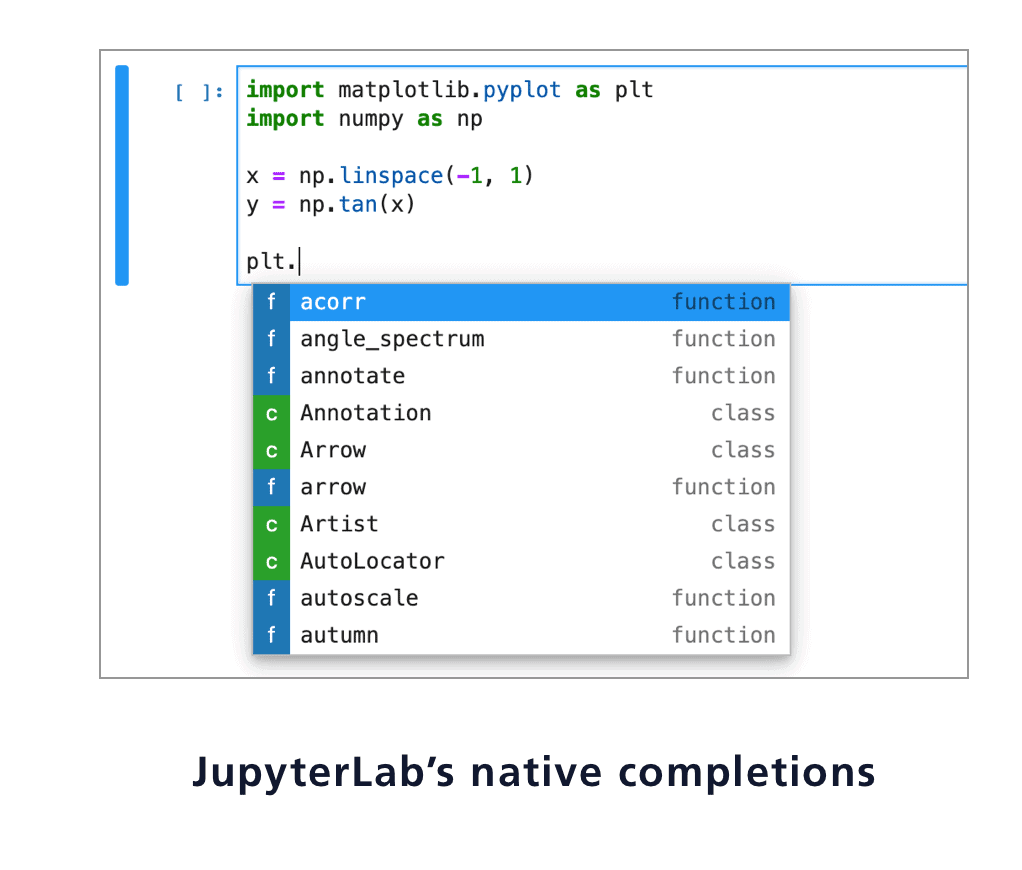

- #COMBINING JUPYTERLAB AND LIGHTTABLE HOW TO#
- #COMBINING JUPYTERLAB AND LIGHTTABLE INSTALL#
- #COMBINING JUPYTERLAB AND LIGHTTABLE SOFTWARE#
- #COMBINING JUPYTERLAB AND LIGHTTABLE FREE#
#COMBINING JUPYTERLAB AND LIGHTTABLE HOW TO#
"In Jupyter Lab, execute editor code in Python console" describes how to add the associated keyboard shortcut to your config: `Ctrl Shift Enter` or `Ctrl-G` that calls `notebook:run-in-console`. The "New action runInConsole to allow line by line execution of cell content" "PR adds a notebook command `notebook:run-in-console`" but you have to add the associated keyboard shortcut to your config yourself e.g. You can also instead do File > New > Console and select a kernel listed under "Use Kernel From Other Session". Turns out that with JupyterLab, all you have to to is right-click and select "New Console for Notebook" and it opens a console pane below the notebook already attached to the notebook kernel. You can also create new Jupyter Notebooks.So, I went looking for the answer to this because in the past I've installed the scratchpad extension by installing jupyter_contrib_nbextensions, but those don't work with JupyterLab because there's a new extension model for JupyterLab that requires node and npm. You can navigate through your filesystem for Jupyter Notebook files (.ipynb), JSON files (.json), CSV files (.csv), etc. If you have never used the ArcGIS API for Python before, read the the getting started guide to see how you can leverage the Python API for GIS visualization and analysis, spatial data management, and GIS system administration.Īfter running jupyter lab, you will notice a file explorer on the left pane of the main view.
#COMBINING JUPYTERLAB AND LIGHTTABLE INSTALL#
Jupyter labextension install labextension install Replace 1.5.0 with the exact version number of the Python API you have installed. To start using the ArcGIS API for Python with JupyterLab, follow these installation steps:ġ) Install >=v1.5.0 of the ArcGIS API for Python by following this installation guide. The below gif shows what this workflow might look like: data is read in from a local csv file, Python code is run in the Jupyter Notebook that transforms that csv data, and the result is visualized on a map.

In this blog post, we will walk through some of the benefits of using JupyterLab in your development and data science workflows. This makes JupyterLab more of an IDE when compared to the Classic Notebook server. JupyterLab interacts with the same Jupyter Notebook format, but offers a robust file explorer, a more intuitive user interface, support for interacting with other file types, etc. While we will continue to support this Classic Notebook experience, v1.5.0 of the Python API also supports the JupyterLab experience.

Historically, this was done by running the jupyter notebook command to launch the ‘Classic Notebook’ server. The ArcGIS API for Python is designed to work extremely well with the Jupyter Notebook format. Using Python in Jupyter Notebooks has become the preferred workflow for data scientists and GIS analysts in many use cases: data cleaning and transformation, statistical modeling, data visualization, machine learning, and more. Jupyter Notebooks are web documents that let you run Python code in an interactive manner, annotate your code with maps/charts/text/equations, and share your results with others seamlessly.
#COMBINING JUPYTERLAB AND LIGHTTABLE SOFTWARE#
Jupyter’s flagship software offering is the Jupyter Notebook. There are many software packages worth exploring-but perhaps the most useful of these software offerings is Project Jupyter.
#COMBINING JUPYTERLAB AND LIGHTTABLE FREE#
You may know that the ArcGIS API for Python provides simple and efficient tools for performing GIS analysis, visualizing your spatial data, and administrating your web GIS-but did you also know that the ArcGIS API for Python integrates smoothly with the larger open-source Python ecosystem? These non-Esri software packages are free to use, and many can provide customization options and new features that enhance your Python development experience.


 0 kommentar(er)
0 kommentar(er)
